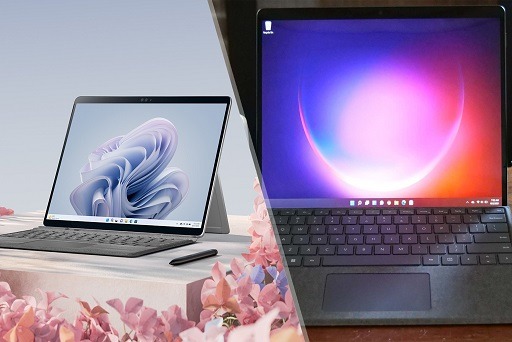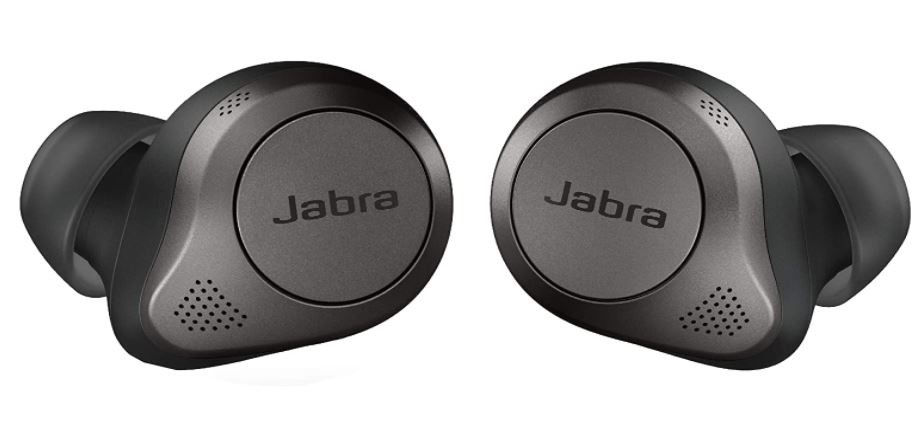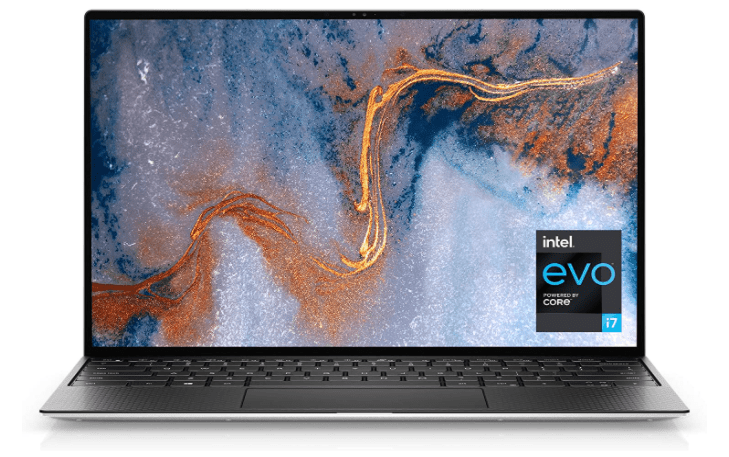Surface Pro 9 vs Pro 8: The next-generation flagship model for 2-in-1 devices is now Microsoft’s brand-new Surface Pro 9, which was just launched. The Pro 8 and Pro X versions have been merged into a single product, the Pro 9, which will now provide a variety of central processing units (CPUs) as well as wireless capabilities. Users will be able to customize their devices by selecting a processor from the 12th generation of Intel or Microsoft, connecting via Wi-Fi 6E or 5G, and selecting from a variety of storage options, all while maintaining the same display and overall style.
While we wait for Microsoft to introduce the Surface Pro 9, the Surface Pro 8 continues to be one of the most capable Microsoft Surface PCs. Despite the fact that it is not the most recent and cutting-edge Pro model, it is nevertheless capable of providing users who require anything immediately with a high-end computer experience (or for a lower price).
The personal computers produced by Microsoft are classified as either “Consumer” or “Commercial.” Even though customers can make purchases from either side of the store, this has historically caused certain customers some difficulty, particularly when they were looking for LTE-capable devices. This is something that has altered a little bit for the current generation, as Microsoft now offers consumer versions of both the Pro 9 and the Pro 9 with 5G models.
First, let’s have a look at the differences and similarities between the consumer versions of the Surface Pro 9 and the Surface Pro 8.
Listings for consumers for the Surface Pro 9 and the Pro 8.
| Surface Pro 9 | Surface Pro 9 with 5G | Surface Pro 8 | |
|---|---|---|---|
| OS | Windows 11 Home | Windows 11 Home | Windows 11 Home |
| Processor | 12th Gen Intel, Intel Evo | Microsoft SQ3 | 11th Gen Intel, Intel Evo |
| Row 2 – Cell 0 | Core i5-1235U, Core i7-1255U | Row 2 – Cell 2 | Core i5-1135G7, Core i7-1185G7 |
| RAM | 8GB, 16GB, 32GB LPDDR5 | 8GB, 16GB LPDDR4x | 8GB, 16GB, 32GB LPDDR4x |
| Graphics | Intel Iris Xe | Microsoft SQ3 Adreno 8CX (Gen 3) | Intel Iris Xe |
| Storage | 128GB, 256GB, 512GB, 1TB | 128GB, 256GB, 512GB | 128GB, 256GB (Removable SSD) |
| Row 6 – Cell 0 | Removable SSD | Removable SSD | 512GB, 1TB (SSD) |
| Display | 13 inches, 2880×1920 (267 PPI), touch, 3:2 aspect ratio | 13 inches, 2880×1920 (267 PPI), touch, 3:2 aspect ratio | 13 inches, 2880×1920 (267 PPI), touch, 3:2 aspect ratio |
| Row 8 – Cell 0 | Up to 120Hz (dynamic refresh rate), Dolby Vision | Up to 120Hz (dynamic refresh rate) | Up to 120Hz (dynamic refresh rate), Dolby Vision |
| Pen | Surface Slim Pen 2 (Sold separately) | Surface Slim Pen 2 (Sold separately) | Surface Slim Pen 2 |
| Ports | Two Thunderbolt 4, Surface Connect | Two USB-C 3.2, NanoSIM, Surface Connect | Two Thunderbolt 4, 3.5mm audio, Surface Connect |
| Audio | Dual 2W speakers, Dolby Atmos, dual far-field mics, Voice Clarity | Dual 2W speakers, Voice Clarity, Windows Studio Effects, dual far-field mics | Dual 2W speakers, Dolby Atmos, dual far-field mics |
| Wireless | Wi-Fi 6E, Bluetooth 5.1 | Wi-Fi 6E, Bluetooth 5.1, NanoSIM, eSIM, 5G, mmWave, Sub-6 | Wi-Fi 6, Bluetooth 5.1 |
| Camera | Front-facing 1080p, IR camera, rear-facing 10MP (4K video) | Front-facing 1080p (Windows Studio Effects), IR camera, rear-facing 10MP (4K video) | Front-facing 5MP (1080p), rear-facing 10MP (4K video) |
| Security | TPM 2.0, Windows Hello IR camera, Windows 11 Secured-core PC | Microsoft Pluton, Windows Hello IR camera, Windows 11 Secured-core PC | TPM 2.0, Windows Hello IR camera |
| Battery | Up to 15.5 hours | Up to 19 hours | Up to 16 hours |
| Dimensions | 11.3 x 8.2 x 0.37 inches | 11.3 x 8.2 x 0.37 inches | 11.3 x 8.2 x 0.37 inhces |
| Row 17 – Cell 0 | (287mm x 208.3mm x 9.4mm) | (287mm x 208.3mm x 9.4mm) | (287mm x 208.3mm x 9.4mm) |
| Weight | 1.94 pounds (879g) | mmWave: 1.95 pounds (883g) | 1.96 pounds (891g) |
| Row 19 – Cell 0 | Row 19 – Cell 1 | Sub-6: 1.94 pounds (878g) | Row 19 – Cell 3 |
| Color | Platinum, Graphite, Sapphire, Forest | Platinum | Platinum, Graphite |
You may also like Microsoft Surface Pro X: Everything you need to know
Now that the commercial versions of the 2-in-1 PCs are available, we can examine how they compare to one another. Because the personal computers are so comparable, the only differences in their specifications that I highlighted were those that distinguished the consumer and business models.
The 12th generation Intel Core CPUs that are used in the Pro 9 have been given the full vPro Enterprise designation, whereas in the consumer version, they have only been given the Essentials tier. When it comes to the Pro 8, the commercial versions are the only ones that come with 5G connectivity and an optional Core i3-1115G4 vPro processor (along with Core i5, Core i7, and other Core I variants).
Listings for Commercial for Surface Pro 9 and Pro 8
| Surface Pro 9 for Business | Surface Pro 9 with 5G for Business | Surface Pro 8 | |
|---|---|---|---|
| OS | Windows 10 Pro, Windows 11 Pro | Windows 11 Pro | Windows 1 Pro, Windows 11 Pro |
| Processor | 12th Gen Intel, Intel Evo | Microsoft SQ3 | 11th Gen Intel, Intel Evo |
| Row 2 – Cell 0 | Core i5-1245U, Core i7-1265U | Row 2 – Cell 2 | Core i3-1115G4, Core i5-1145G7, Core i7-1185G7 |
| Graphics | Intel Iris Xe | Microsoft SQ3 Adreno 8CX (Gen 3) | Intel UHD (i3), Iris Xe (i5, i7) |
| Wireless | Wi-Fi 6E, Bluetooth 5.1 | Wi-Fi 6E, Bluetooth 5.1, NanoSIM, eSIM, 5G, mmWave, Sub-6 | Qualcomm Snapdragon X20 LTE, SIM, eSIM |
It is anticipated that the Pro 9 will begin shipping on October 25; pre-orders can be placed right now. The starting price for the Intel model should be around 999 dollars, and the starting price for the ARM model should be around 1,299 dollars. The Microsoft Surface Pro 8 is now easily accessible to consumers.
Microsoft Surface Pro 9 vs. Pro 8: Design and features
Between the Pro 8 and the new Pro 9, there hasn’t been a whole lot of physical development. Both variants come in at a mere 0.37 inches (or 9.4 mm) in thickness, indicating that the proportions are practically identical. The weight of both options is comparable, differing by little more than a few grams here and there depending on whether or not you go with the 5G option. An anodized aluminum chassis serves as the foundation for every Pro PC.
The back of the models still features a foldable stand that can extend to a maximum angle of 165 degrees. This gives you the ability to utilize the tablet at a variety of angles, which is especially useful when you are writing with an attachable keyboard and touchpad or typing with it. Both the Pro 8 and the Pro 9 come in the hues Platinum and Graphite; in addition, the Pro 9 is available in the colors Sapphire and Forest. The Graphite color is the sole option for purchasing the Pro 9 with 5G.
The 3.5mm audio jack that was formerly featured on the Pro 8 is no longer included on the Pro 9. It still has a proprietary Surface Connect port in addition to its dual Thunderbolt 4 ports. Due to the fact that it is built on the ARM architecture, the Pro 9 with 5G has a NanoSIM slot, two USB-C 3.2 ports, and a Surface Connect port. If you decide to purchase a Pro 8 or Pro 9, you should probably look into the best Thunderbolt 4 docks first. Those who purchase the Pro 9 5G variant, on the other hand, should investigate the best general laptop docks.
Bluetooth 5.1 is included in all of the versions, but the Pro 9 with 5G also has the ability to connect to mmWave and Sub-6 5G networks. Wi-Fi 6E is available on the Pro 9 models, but the Pro 8 can only support Wi-Fi 6. If you purchase the Pro 8 from the business section of Microsoft’s online store, you will have the option to purchase it with LTE connectivity made possible by a Qualcomm Snapdragon X20 modem.
Both the Pro 9 and the Pro 8 come equipped with two 2W speakers that support Dolby Atmos and two far-field microphones that may be used for making phone conversations. Because it has a neural processing unit (NPU), the Pro 9 with 5G comes with Windows Studio Effects, which contains a variety of useful add-ons such as auto framing, background blur, eye contact, and voice focus. This is related to the fact that it has a front-facing camera with a resolution of 1080p and a rear-facing camera with a resolution of 10MP and 4K video capabilities. The Pro 8 has the same amount of hardware as the Pro 9, however, it does not come with the Studio Effects bundle that is included in the Pro 9 with the 5G NPU.
Concerning safety, every Pro model comes equipped with a TPM 2.0 chip and an IR camera for use with Windows Hello. Both the Pro 9 and the Pro 9 with 5G are Secured-core personal computers, but the latter adds Microsoft Pluton to its feature set.
And last but not least, new Signature Keyboards are available in the colors Sapphire and Forest. Since each color is supplied separately, at least you’ll have the option to combine and contrast hues. They are now constructed using a modern Alcantara fabric that contains at least 12% material that is derived from renewable sources.
You may also like Microsoft Surface Pro 7: The Best 2-in-1 Laptops with 10th Gen Intel
Microsoft Surface Pro 9 vs. Pro 8: Performance
The Surface Pro 9 features mobile central processing units (CPUs) from Intel’s 12th Generation U-series. In addition to up to 32GB of LPDDR5 RAM and a 1TB SSD that can be updated, you have the option of selecting either a Core i5-1235U or a Core i7-1255U processor. Microsoft estimates that the new central processing units can give up to fifty percent more performance than the 11th-generation chips included in the Pro 8.
The Pro 9 with 5G carries on the history of the Pro X by providing users with an updated version of the ARM-based Microsoft SQ3 CPU. It is possible for it to be accompanied by as much as 16 GB of LPDDR4x RAM and as much as 512 GB of a detachable solid-state drive.
Both the Pro 9 and the Pro 8 have received the Intel Evo certification, which indicates that they maintain their speed even when running on battery power, in addition to providing a quick wake from sleep and long battery life. However, the NPU that assists with Windows Studio effects is included in the Pro 9 with 5G, even though it does not have the same designation as the Pro 9 because its CPU is different.
Microsoft estimates that the battery life of the Intel-based Pro 9 can last for up to 15.5 hours with a single charge. Because it runs on an ARM-based technology, the Pro 9 with 5G has a battery life that is estimated to last up to 19 hours. It is important to take these figures with a grain of salt because the Pro 8 is advertised as having a battery life of up to 16 hours; but, in our tests, it lasted closer to 11 hours when the display’s refresh rate was set to 60 Hz.
There are versions of the CPUs designed specifically for use with vPro available for the Pro 8 and Pro 9, but the Pro 9 with 5G maintains the same SQ3 processor regardless of model. You will gain access to an additional Core i3-1115G4 CPU along with Intel UHD graphics if you go with the Surface Pro 8 for Business model. Other than that, Intel chips have integrated graphics that are significantly more powerful thanks to Intel Iris Xe. Integrated graphics are provided by an Adreno 8CX (Gen 3) and they are found in the SQ3 chip.
You may also like Microsoft Surface Pro 9 vs. Pro X
Microsoft Surface Pro 9 vs. Pro 8: Display
When compared to the display seen on the Pro 8, the touch screen found in the Pro 9 is virtually identical. It has the same screen size of 13 inches, a resolution of 2880 by 1920 with a pixel density of 267 PPI, and an aspect ratio of 3:2 which is excellent for a tablet because of its vertical orientation. Inking is made far more pleasant as a result of the dynamic refresh rate, which enables up to a smooth 120Hz.
Dolby Vision is standard on the Pro 9 and the Pro 8, but it does not appear to be an available upgrade for the Pro 9 model that comes with 5G connectivity. Bezel has a relatively thin profile all the way around its four edges. The Pro 8 and Pro 9 are designed to function most optimally when used in conjunction with the Surface Slim Pen 2, despite the fact that this item is not often included and must be purchased separately. The pen offers haptic force feedback for a more natural feel, although this feature is only available in select applications.
Executive Editor Daniel Rubino mentioned this in his review of the Surface Pro 8, which can be found here “When you combine a screen size of 13 inches, 120 frames per second, Dolby Vision High Dynamic Range (HDR), adaptive color, and excellent color accuracy, you get the best Surface Pro display experience that has ever been possible. It works out wonderfully.”
When it comes to color reproduction, the Pro 8 has great performance, scoring 100% in sRGB, 81% in AdobeRGB, and 83% in DCI-P3, respectively. In terms of brightness, it reached a maximum of 441 nits and a low of 1.9 nits. It is expected that the Pro 9 will have numbers that are the same or very comparable to these.
Would you like to read more about Microsoft Surface Pro 9 vs Pro 8-related articles? If so, we invite you to take a look at our other tech topics before you leave!










